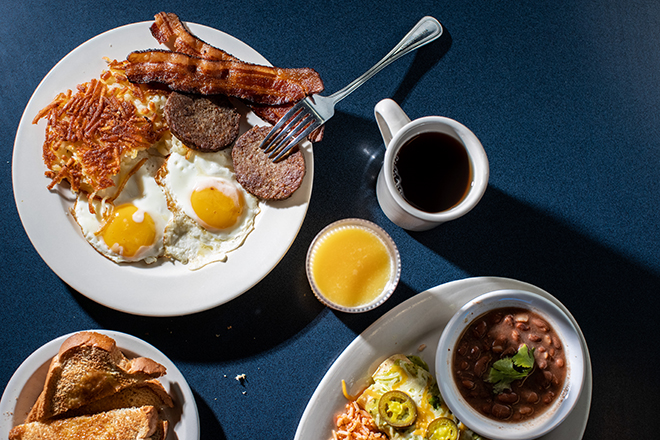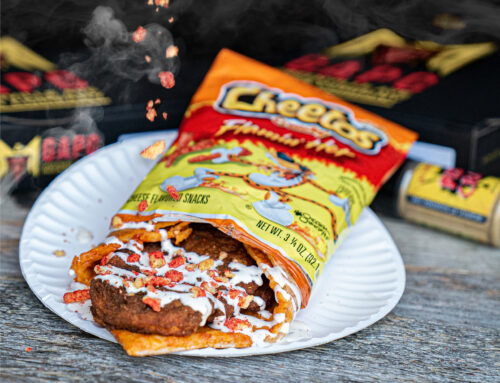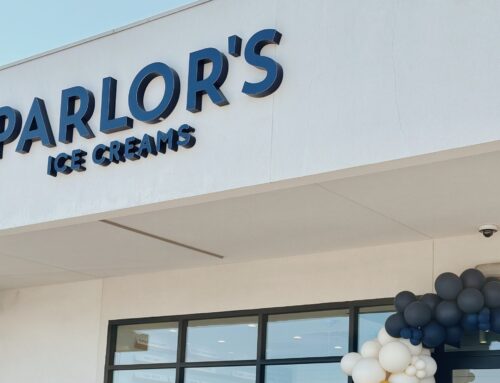
Photography by Kathy Tran
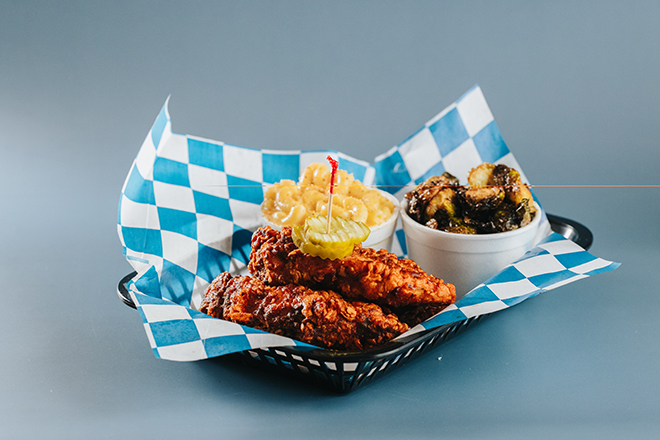
2020: Hot Chicken
NASHVILLE HOT CHICKEN was the neighborhood’s hottest food trend in 2020. It hatched seemingly out of nowhere in April when John Sanchez opened Chirps Chicken on Lower Greenville. By October, two other hot chicken shacks had opened in East Dallas, with another on the way. Nashville’s iconic restaurant chain Hattie B’s plans to open its first Texas location in Deep Ellum in late summer.
Even national chains want a piece of the action. Col. Sanders joined the fray, serving KFC’s take on the fiery bird. Then McDonald’s added spicy chicken nuggets—the first time since 1983 that the fast-food joint added a new nugget flavor.
With an ever-growing number of eateries joining the hot chicken hen house, will one restaurant rule the roost?
Hot chicken lore claims the dish all started with Thornton Prince. The good-looking man was a known flirt who enjoyed frequent nights out with the ladies, even though he had a steady girlfriend at home. Fed up with Prince’s behavior, his girlfriend doused his fried chicken in cayenne, hoping to make his favorite food excruciatingly inedible.
Turns out, Prince loved the chicken and asked for more.
The Prince family opened Nashville’s first hot chicken restaurant in 1945 and spawned dozens of copycat eateries. The revenge dish migrated to Chicago in 2017 and Los Angeles in 2019 before taking over East Dallas in 2020.
Sanchez didn’t know hot chicken would become the latest food craze when he opened Chirps in LG Taps after the bar closed because of COVID. He’d never tasted Music City’s signature food, but he noticed a gap in the market and wondered if spicy chicken could succeed in Dallas.
“If it’s nonexistent, why not give it a shot and see what happens?” Sanchez says.
“I settled in this area because it’s a good place to live. There’s disposable income.”
Sanchez and former LG Taps owner Jason Caswell opened Chirps as a ghost kitchen for delivery orders only. They were so successful, they opened the eatery for dine-in service. Neighbors flocked to the restaurant, and they kept coming, even as the hot chicken scene began heating up.
Lucky’s Hot Chicken debuted in September in a historic building on Gaston Avenue. The space, built in the futuristic “googie” style, was once home to Norman Brinker’s first restaurant, Brinks Coffee Shop & Restaurant. Vandelay Hospitality purchased the property in 2019 after it sat vacant for years.
The blues culture of Nashville inspired the hospitality group’s newest concept. The restaurant pays tribute to the time period through its playlist, retro décor and, of course, its food. Lucky’s partnered with Nashville transplant Josh Bonee to create a simple, yet authentic, menu of chicken with five levels of spice.
A month later, Palmer’s Hot Chicken rolled into the former Lakewood’s 1st and 10 at Hillside Village. Founder Palmer Fortune was born in Dallas but spent 25 years in Nashville perfecting his hot chicken recipe. He served it to customers at his first hot chicken restaurant, Porch, in Georgia.
In May 2019, he dreamed he was bussing tables at a Porch in Dallas and flew to the Big D to scope out locations. He remodeled the former sports bar to include a 1,400-square-foot covered patio with faux grass and a pickup window.
“We’re trying to bring Nashville hot chicken to the masses in a cool, fun environment,” Fortune says.
The most popular item at each restaurant is the chicken tender plate, which comes in multiple levels of spice alongside Southern sides ranging from mac and cheese to French fries and collard greens.
Fortune pushes the authenticity of his chicken, prepared with a traditional heat application that produces a crunchy bark. It’s an important distinction with so many hot chicken restaurants in the neighborhood, he says.
Sanchez and Caswell prefer their own take on the fiery bird. They experimented with three or four recipes before discovering the right combination.
“By nature, you instantly become competitive,” Sanchez says. “You want to try and dominate the market. If you take a step back and analyze it, there’s more than enough staying power for the three of us. It’s all different—the way it’s battered and brined. You’ll never get the same type, even though we’re all serving the same cuisine.”
The spicy delicacy spread through East Dallas like wildfire, but will the upward trend last? Francois Reihani, the Dallas restaurateur behind Pok the Raw Bar and La La Land Kind Café, says neighbors should think twice before jumping on the hot chicken bandwagon.
“Trends tend to pull out people who might not have done hospitality,” he says. “They see the lines out the door and think restaurants have crazy margins. It rushes them to think, ‘Let’s do this,’ and it doesn’t always go well for them.”
Chirps and Lucky’s have gone all in on hot chicken, but Palmer’s has diversified its menu, which Fortune says will help the restaurant survive if the hot chicken trend cools. Beyond hot chicken, Palmer’s serves catfish, shrimp salad, tacos and wraps.
“Hot chicken has an addictive quality,” Fortune says. “When big chains are introducing Nashville hot chicken nationally, it has staying power.”
2019: Ramen
2018: Rolled Ice Cream
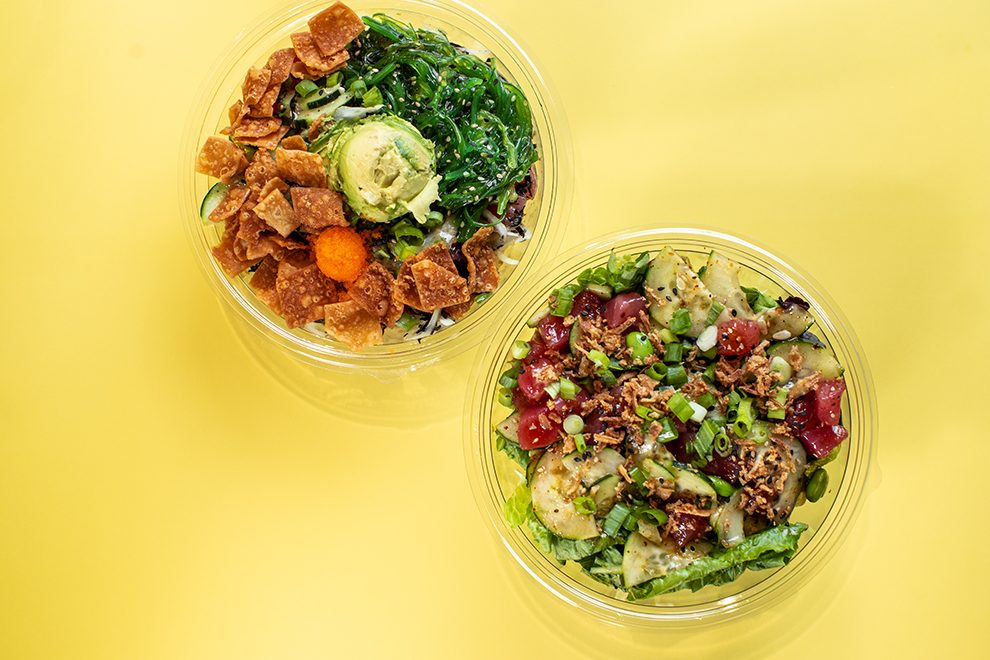
2017: Poké
FRANCOIS REIHANI THOUGHT it would be easy enough to find a poke restaurant in Dallas when a friend from California came to visit.
“I was so naïve,” he says. “In California, there was one on every block. I looked on my phone, and there was none at all. It was a green light.”
Hawaiians had eaten the raw fish dish mixed with rice, greens and other fresh toppings since the 1970s, but it took decades to gain popularity on the mainland.
The bowls include the same ingredients as sushi, but are served at a more affordable price point, appealing to college students and budget-conscious consumers. Plus, the dish is assembled in a familiar Chipotle-style assembly line but is a much healthier alternative to a burrito.
“Is poke that special of a food? No,” Reihani says. “But did people get their eye on it and want to post it on Instagram? That did happen.”
In 2017, Reihani and co-founder Brandon Cohanim opened Dallas’ first poke concept, Pok the Raw Bar. The founders knew they’d be busy, but they never expected lines out the door for the first month after opening. Reihani later left to start Lower Greenville’s La La Land Kind Café, which employees youth phased out of the foster care system.
About a year after the Raw Bar opened, poke restaurants like Mamasan House of Poké, Poké Bop, Freshfin Poké Co. and Poké Sushi Roll had saturated the East Dallas neighborhood. Mamasan House of Poké and Freshfin Poké Co. have since closed.
“When I left Pok the Raw Bar, poke wasn’t huge yet,” Reihani says. “What it became was something like I’d never seen in my life. People think you can just throw fish and sauce in a bowl and people will come to you.
“We wanted to be the Michelin-starred restaurant of poke. The brand, the design, the feel you get when you walk in, it feels elevated compared to when you walk into other poke places. Raw Bar has survived and is still doing well.”
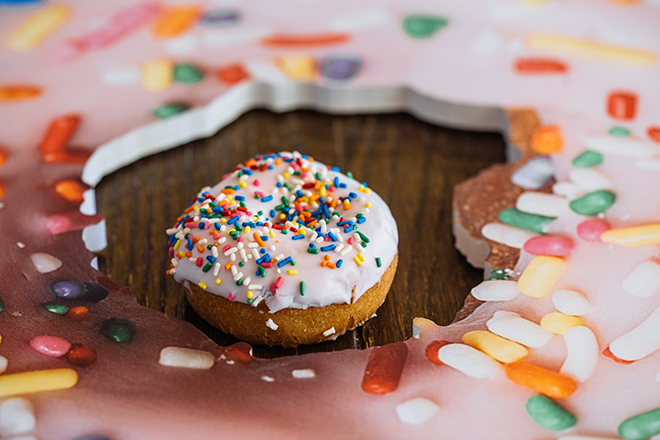
2016: Gourmet Doughnuts
THE DOUGHNUT INDUSTRY has come a long way from selling holey glazed cakes. The doughnut has transformed from an inexpensive breakfast staple to a high-end dessert that consumers embrace with empty stomachs and open wallets. Bakeries attract crowds with innovative flavors, toppings and hybrid creations that continue to feed the doughnut craze.
“We have basic doughnuts, but people are always looking for more,” says Shelley Lobona, co-owner of Hypnotic Donuts on Garland Road. “Their tastes have changed. The way [doughnuts] are decorated, that’s evolved too. It started by dipping a doughnut in cereal, but we’ve taken it beyond that.”
Hypnotic Donuts joined the doughnut revolution in 2012 after founder James St. Peter visited Portland’s famous Voodoo Doughnuts. Jarams Donuts and Milk and Cream have since opened, but Hypnotic made the biggest splash as the neighborhood’s first specialty doughnut shop.
On opening day, people lined up out the door and around the corner to feast on creations like the Evil Elvis, a glazed doughnut with peanut butter, banana and honey, and the Zooropa, a vanilla cake doughnut with vanilla frosting, sprinkles and iced animal cookies.
“A doughnut is like a blank slate to add flavors and decorations,” Lobona says. “There’s so much you can do with that. It’s endless.”
2016: Brunch
2015: Food Trucks
2014: Kale
HOW DID A LEAFY GREEN VEGETABLE that smells like compost and tastes roughly the same become one of the most popular foods in the United States? It had a little star power behind it. In 2011, Gwyneth Paltrow made kale chips on “The Ellen DeGeneres Show” and convinced the masses to ignore their taste buds and force down forkfuls of the new “it” vegetable.
Over the years, Americans developed a love-hate relationship with the food, tolerating its flavor because it packs a nutritional punch. Kale is high in vitamins A, C and K. Plus, it contains fiber, antioxidants and a wide range of other nutrients.
“People are always looking for healthful options,” says Kyle Frederick, chief operating officer at Original ChopShop. “If you look 10 years ago, people didn’t want to pay for it in flavor. Chefs have found ways to make [kale] palatable.”
Original ChopShop, which opened a location last year in the Hillside Village shopping center, uses kale in a number of dishes, including the kale Caesar salad, the chicken and kale sandwich and a number of juices.
“I think we’re [using kale] in a really appealing way,” Frederick says. “As kale becomes less of a four-letter word, folks are more likely to try it. It makes it easier for people to try new things if we mix it with other products instead of just a big glob of kale on a plate.”
The kale trend has waned from its 2014 peak, but plenty of people still like and eat kale, especially as veganism and plant-based diets become more popular, Frederick says. Perhaps, like the rest of us, kale is just finding its new normal.
2011: Cupcakes
IN 2000, Carrie Bradshaw ate a cupcake from Magnolia Bakery in an episode of “Sex and the City” and set in motion a food trend that lasted for decades.
The cupcake craze was already in full swing when Roshi Muns opened Society Bakery on Greenville Avenue in 2003, but business exploded four years later when national cupcake chain Sprinkles opened in Dallas.
“It increased awareness of cupcakes even more because they have a national presence,” Muns says. “Then people started saying, ‘Hey, there’s a local cupcake place.’”
Later that year, Society Bakery received its own share of national attention when “The Ellen DeGeneres Show” voted it one of the top 10 best cupcake shops in the United States. Muns knew the ranking would change her life, so she sat on the information for about five months to spend more time with her newborn. She announced the news during the January slow season, and business hasn’t been slow since.
Muns has delighted both neighbors and celebrities, such as Mark Cuban, Jerry Jones, Diddy and Steven Tyler, with quirky flavors like s’mores, Boston cream and salted caramel.
Society Bakery has a diversified menu of cookies, brownies, cinnamon rolls and petit fours, but cupcakes remain the top seller, Muns says.
“There’s more competition and more trends out there, but cupcakes do have staying power,” she says. “There’s no magic formula other than you have to care about what you put out on a daily basis. This business is how I support my family. I’m not doing this with an exit strategy in mind: ‘Let me just capitalize on a trend and ride it out for two years.’ We take it seriously — our product and customer service — and customers have supported us.”
